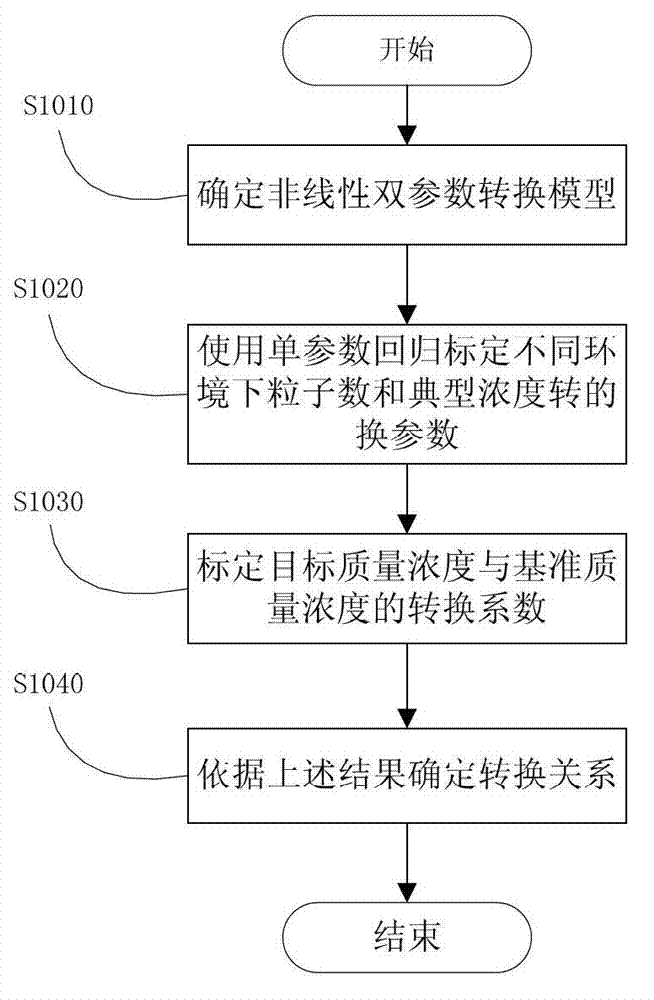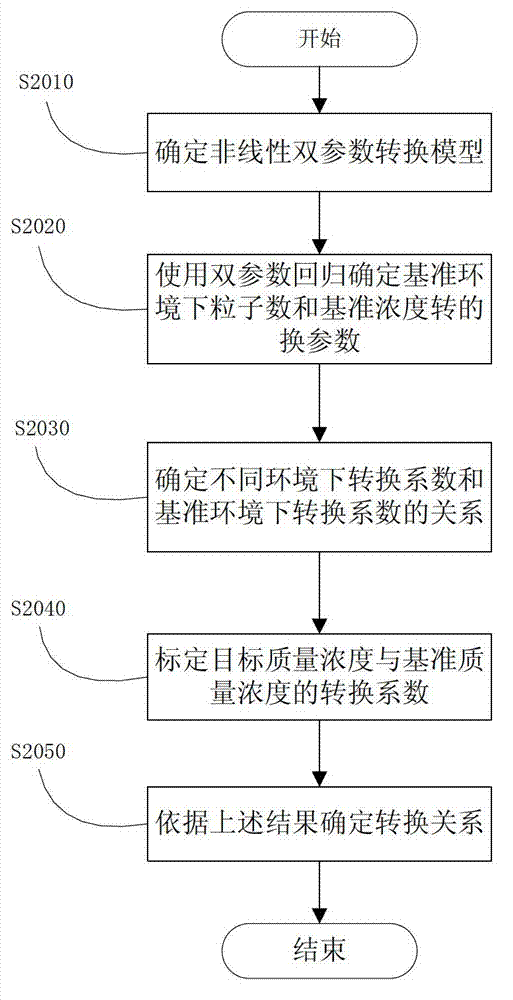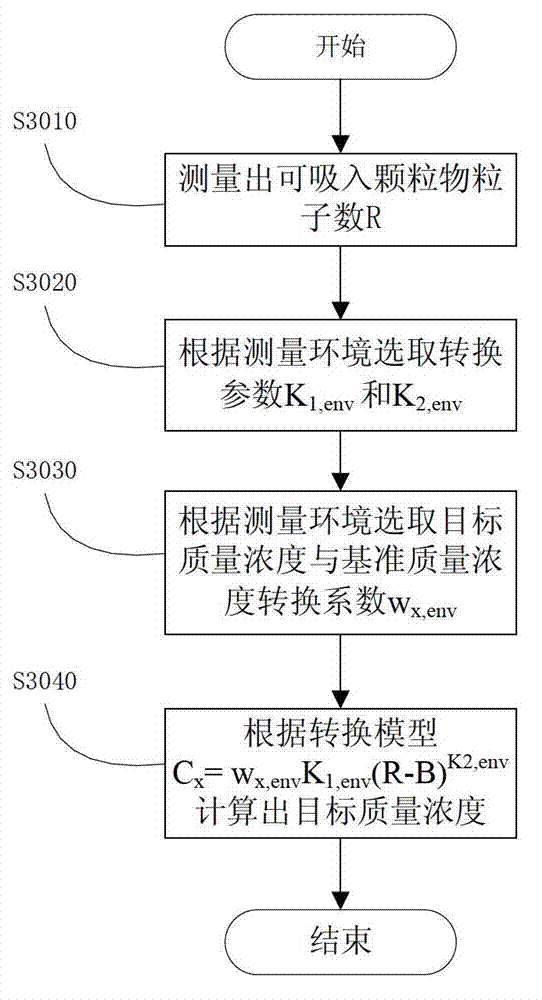Method for converting particle number concentration measured by using light scattering method into mass concentration and detector
A mass concentration and conversion method technology, which is applied in the field of concentration conversion methods and detectors, can solve problems such as K value differences and errors, and achieve accurate conversion and measurement
- Summary
- Abstract
- Description
- Claims
- Application Information
AI Technical Summary
Problems solved by technology
Method used
Image
Examples
no. 1 example
[0060] figure 1 is a flowchart of the transformation parameter calibration process according to the first embodiment of the present invention.
[0061] like figure 1 As shown, in step S1010, the particle number concentration R and the mass concentration C x The transformation model is determined as a non-linear transformation model C x = w env , x · C 0 = w env , x · K 1 , env ( R - B ) K 2 , env , in
[006...
no. 2 example
[0094] In this embodiment, the same symbols and subscripts as those in the first embodiment are used, and their meanings are the same as those in the first embodiment, so the description will not be repeated here.
[0095] figure 2 is a flowchart of the conversion parameter calibration process according to the second embodiment of the present invention.
[0096] like figure 2 As shown, in step S2010, the particle number concentration R and mass concentration C x The transformation method is determined as a nonlinear transformation model
[0097] Next, step S2020 is executed, in the selected reference measurement environment (such as outdoor atmosphere), for the reference mass concentration, such as PM10 or PM2.5, by measuring the control values of multiple particle number concentrations and mass concentrations, directly use Double-parameter regression method returns the conversion coefficient K 1 and K 2 .
[0098] Then, in step S2030, by comparing the conversion c...
no. 3 example
[0103] In this embodiment, the same symbols and subscripts as those in the first embodiment are used, and their meanings are the same as those in the first embodiment, so the description will not be repeated here.
[0104] image 3 is a flowchart of the concentration conversion process according to the third embodiment of the present invention.
[0105] refer to image 3 , through the non-linear conversion model determined by the present invention, wherein the conversion parameters can be obtained in the manner described in the first embodiment or the second embodiment, and the conversion process can be completed by the following steps:
[0106] Step S3010: Measure the particle number concentration R of the inhalable particles in the air with a light-scattering particle detector;
[0107] Step S3020: Determine the conversion parameter K according to the measurement environment 1,env and K 2,env ;
[0108] Step S3030: Determine the conversion coefficient w according to the t...
PUM
 Login to View More
Login to View More Abstract
Description
Claims
Application Information
 Login to View More
Login to View More - R&D
- Intellectual Property
- Life Sciences
- Materials
- Tech Scout
- Unparalleled Data Quality
- Higher Quality Content
- 60% Fewer Hallucinations
Browse by: Latest US Patents, China's latest patents, Technical Efficacy Thesaurus, Application Domain, Technology Topic, Popular Technical Reports.
© 2025 PatSnap. All rights reserved.Legal|Privacy policy|Modern Slavery Act Transparency Statement|Sitemap|About US| Contact US: help@patsnap.com



